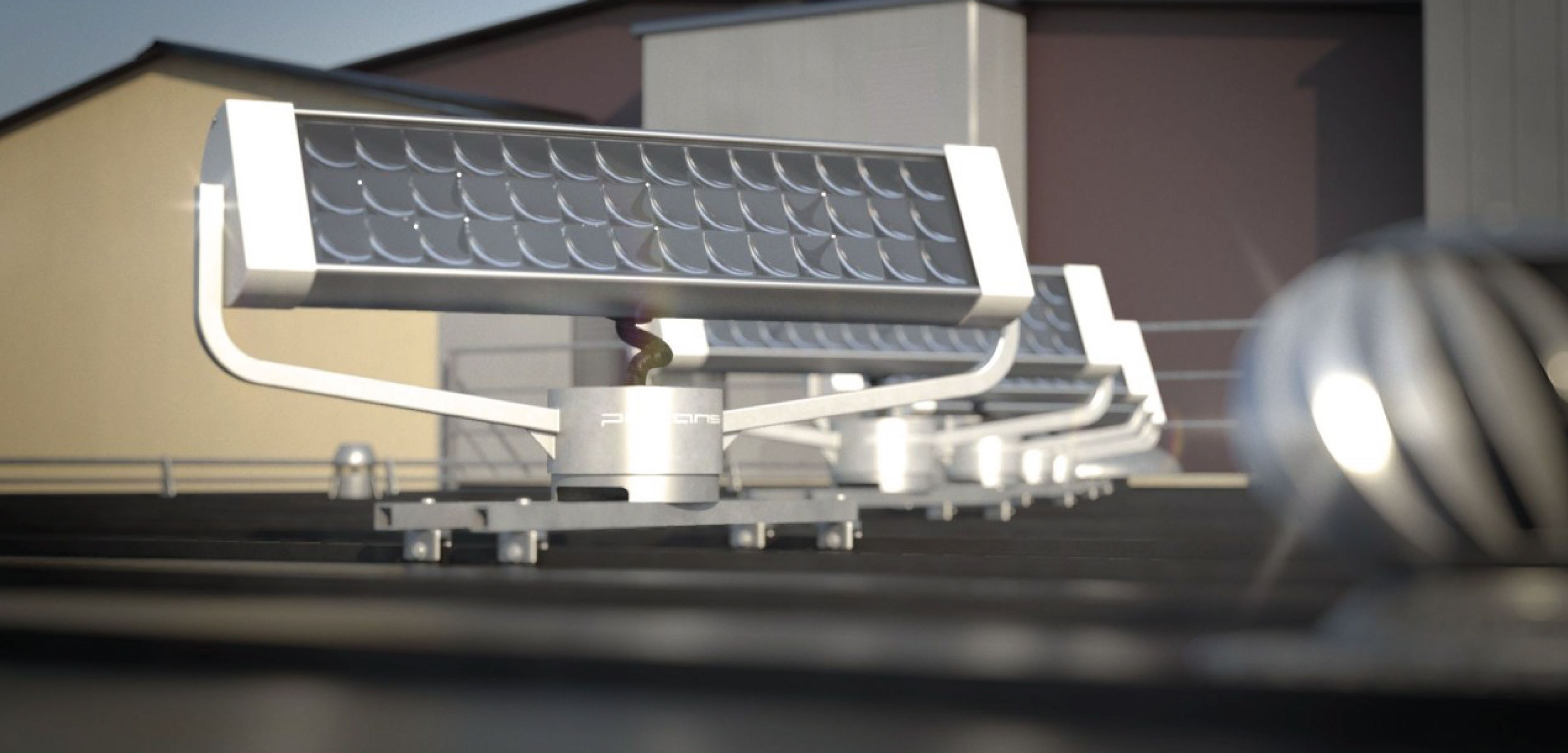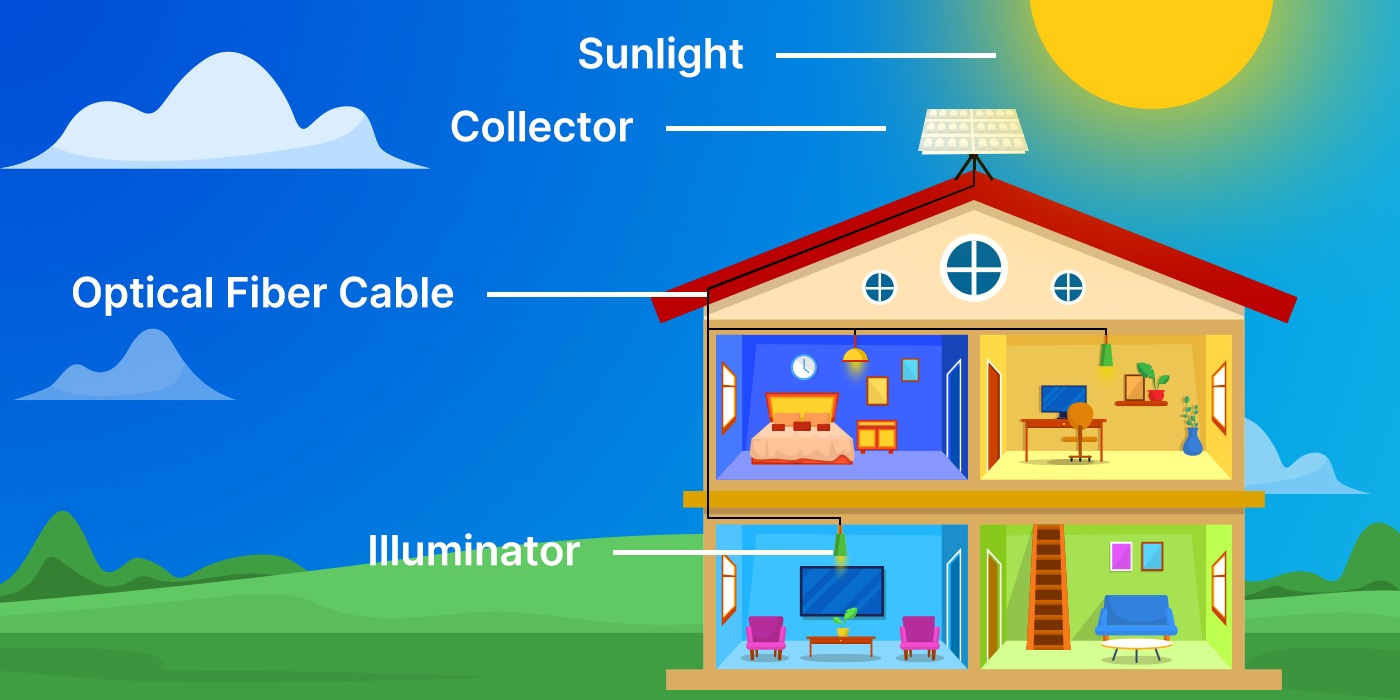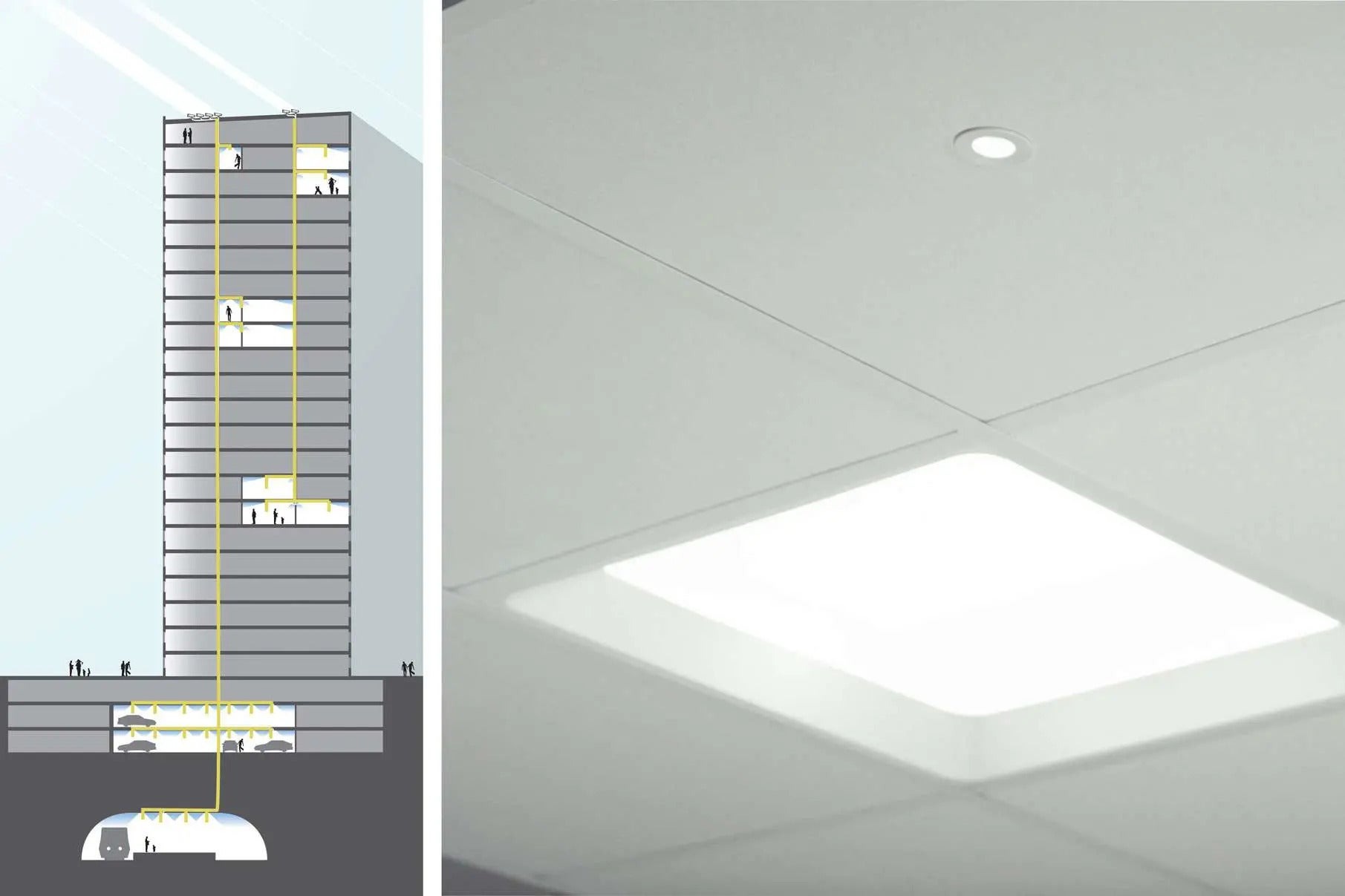Updated 11 months ago
Should you install fiber optic solar lights instead of solar panels?
Written by
Michael Cheng

Find out what solar panels cost in your area
Fiber optic systems consume plenty of electricity to power your home – which can lead to large electric bills. What if we told you that you can use solar power with your fiber optic system to reduce energy consumption and build long-term savings?
Before you start replacing all of your lights at home, there are several things you should know about this supplementary lighting solution. Let’s find out how fiber optic solar lights work and discuss whether or not you could opt for them instead of installing solar panels.
Fiber optic solar lights at a glance
-
Fiber optic solar lights illuminate rooms and indoor spaces using natural sunlight.
-
Unlike regular electricity-powered lights, they do not work well on cloudy days, and do not work at all at night.
-
Upfront costs for fiber optic solar lights are higher than those of regular light fixtures. However, they can help reduce your monthly energy bills because they consume very little electricity.
-
People who live in areas that receive plenty of consistent sunlight during the day stand to get the most out of fiber optic solar lighting.
-
Fiber optic solar lighting is only supplementary and does not save nearly as much money as solar panels do. Find out how much more money you can save with solar by using our calculator.
What is fiber optic solar lighting?
Fiber optic solar lighting collects light from the sun and shines it in your home using small amounts of energy.
This type of light does not use solar panels. Instead, it sits on your roof and uses a lighting box or ‘globe collector’ to gather natural sunlight, which passes through a series of fiber optic cables to fixtures inside the home.

This type of light cannot serve as a primary light source inside rooms because when it’s cloudy, light output decreases. Like skylights, fiber optic lighting systems do not work at night, and can only be used during the day.
You’ll have to use fiber optic lighting in conjunction with regular artificial lights like fluorescent fixtures or light-emitting diodes (LEDs) for consistent, high-quality illumination. This combination is called a hybrid solar lighting system.
3 main parts of a fiber optic solar light
There are three main working parts in a fiber optic solar light:
1. Lighting collector
2. Fiber optic cable
3. Illuminator/fixture
Lighting collector
Lighting box collectors sit on the rooftop of a home and gather sunlight during the day. They range between two and five feet long, and because they are on the roof, you should make sure there aren’t any trees, poles, or any other tall obstructions in the way that could cast shadows and reduce the amount of light going into the collector.

They contain several fresnel lenses, which are designed to maximize ultraviolet light intake. A fresnel lens is a type of lens filled with grooves to focus light and make it more intense. Sunlight entering the box is concentrated inside a small filter or chamber before passing through fiber optic cables.
Some lighting boxes come with a solar tracking system in order to gather as much sunlight as possible. It follows the sun throughout the day and adjusts the position of the box to ensure it’s always facing the sun.
Lighting boxes with trackers consume between two and 10 watts of power, which is equivalent to a cell phone charger or one very small light bulb.
Fiber optic cable
Fiber optic cables “carry” sunlight from the lighting box to the illuminator or fixture, and are made out of either glass or acrylic.
We recommend using glass optical fibers, because the material is more reliable, does not discolor, and retains light intensity better than acrylic, with only 1% light output loss per foot of light traveled along the cable (acrylic loses up to two times more light per foot). The downside to glass is that it is more expensive than acrylic, but most would argue that it’s worth the price.

Regardless of the fiber optic material, you have to consider that light output decreases the longer it has to travel from the lighting box collector to the fixture. For example, a 33-foot cable delivers 64% of light, while a 65-foot cable only delivers 40%.
Therefore, you should use the most direct cable route possible to prevent light loss, or only install the lights in rooms close to the lighting box collector, such as in the attic or second floor of the home.
How much light can you expect to come through? Well, one fiber optic cable carries 400 to 600 lumens of light, depending on outdoor conditions and the length of the cable. A flashlight generates about 100 lumens. With that said, a single fiber optic cable offers the same output as four to six flashlights.
Illuminator/fixture
The illuminator or fixture functions like a traditional light bulb; this component distributes visible light from the fiber optic cable to the room. You can mount the fixture on the ceiling, wall, or any other surface just like you can with a regular light, but there are no dimming controls.

Light intensity varies, depending on how much light is gathered by the lighting box collector, so on sunny days, the fixture emits more light. When it’s cloudy or when sunset is approaching, light output decreases.
A 100-square foot room requires 1,000-2,000 lumens of illumination. For a room this size, you would need five to seven illuminators for adequate lighting, assuming each fixture offers 400 to 600 lumens of light output.
The amount of light you need varies from room to room; a typical home office requires 6,000 to 8,000 lumens, while a bedroom only needs 1,000 to 2,000 lumens. Bathrooms, although usually smaller than other rooms at home, need 7,000 to 8,000 lumens. A good rule of thumb: the more activities conducted inside a room, the more lighting support you should have.
Types of indoor fiber optic solar lights
Ceiling mount fixtures

Image source: Dornob
Ceiling mount fixtures are the most common type of fiber optic solar light, and can be circular or linear, depending on the design.
Most ceiling mount fiber optic solar lights are secured directly on the ceiling surface, because the cables must be directly connected to the fixture from the lighting box on the roof.
This type of fixture can be equipped with a clear or frosted lens. A transparent, clear lens transmits a powerful light beam and is ideal for large rooms. A frosted lens acts as a diffuser and helps the fixture generate a soft beam, which reduces light glare in small spaces or rooms with short ceilings.
Strip lights

Image source: TPR Lights
Strip lights are long and compact, measuring between 12-48 inches. These lights are used for different purposes at home and are effective for both direct and indirect lighting. They can be installed along the borders of rooms, as well as vertically or horizontally on walls.
Fiber optic solar strip lights are recommended for rooms requiring a wide light spread, or in other words, this type of light is not used for highlighting a specific section of the room or object. Strip lights can also be installed above tables for task lighting.
Recessed fixtures

Image source: GB&D Magazine
Fiber optic solar recessed fixtures are ceiling mount lights installed on a small opening. The main difference between recessed lights and ceiling mount lights is the way the fixtures are installed. Recessed lights are laid in an opening on the ceiling and do not stick out. Ceiling mount lights are secured directly on the surface via a bracket or screws and take up space on the surface.
Homes with low ceilings benefit from recessed lights because they allow more space on the ceiling. Ceiling mount lights, such as chandeliers and track lights, are better for rooms with tall ceilings. You wouldn’t install a chandelier in a room with a low ceiling because you would be prone to bumping your head on it.
Recessed lights are used for general illumination inside rooms and are capable of highlighting specific objects, such as paintings or pictures on walls. Some fiber optic solar recessed fixtures are equipped with an adjustable light head, allowing you to position the light towards a specific part of the room.
Pros and cons of fiber optic solar lighting
Pros | Cons |
|---|---|
Long-term savings | High upfront costs |
| Can't work in bad weather/at night |
| Not suitable for your entire home |
Pro: Long-term savings
A fiber optic solar light with a 10-watt system that can accommodate four to six fixtures uses considerably less power than regular electricity-powered light bulbs.
If you’re paying 12 cents per kilowatt hour (kWh) for electricity, it only costs 30 cents per month to run four to six fixtures for eight hours per day. By comparison, most rooms with electrical lighting use between four to six 60-watt light bulbs depending on the size. If you run the lights eight hours per day, you would be paying between $6.90 to $10.20 per month at 12 cents per kWh.
Using fiber optic solar lights translates to some savings over time and can help reduce your monthly electricity costs at home. Based on the above scenario, it only costs $18 to run fiber optic lights over a period of five years, compared to $612 for electricity-powered lights. Over a 10-year period, fiber optic lights cost $36 to run, compared to $1,224 for electricity-powered lights.
Con: High upfront costs
A downside to fiber optic solar lighting is the high upfront costs. A small system for homes consisting of a light collector for supporting up to six fixtures costs between $500 and $750, plus glass cables that cost $10 per foot. One home would use about four of these fiber optic solar lighting systems, which costs between $2,000 to $3,000 without cables.
Then you have to factor in labor costs for the installation - a professional must install these fiber optic lights because it requires drilling holes on the roof, walls, and ceilings.
Con: Doesn’t work well during cloudy days and at night
Fiber optic solar lights can only emit sunlight they catch from the lighting box collector. They cannot produce light on their own, so they don’t work at night or very well during cloudy conditions - which is when you need them the most.
This is the key reason why you can’t replace all of your light fixtures at home with fiber optic solar lights. The lighting solution is only supplementary, and will never be the main light source inside your home.
Con: Not suitable for every part of the home
This type of solar light should only be used in rooms that are close to the lighting box collector, in order to minimize light loss stemming from using very long fiber optic cables. Rooms on the second floor or close to the rooftop are the best places to install.
Additionally, you’ll want to avoid installing this type of light in rooms that accumulate dust, such as sheds, garages, and storage areas. Dust can easily get stuck in the cables, resulting in light loss.
Should you install fiber optic solar lights instead of solar panels?
Despite what the name may suggest, fiber optic solar lights are completely different from solar panels.
Fiber optic solar lights are right for your home if you need additional lighting during the day and are looking to cut down some long-term electricity costs and want to use less energy in your home. However, because fiber optic solar fixtures cannot produce light on their own and do not work at night, they will never be your main light source and they cannot replace regular lights.
For meeting your lighting needs without the severe limitations associated with fiber optic solar fixtures, we recommend installing solar panels. Solar panels will provide electricity for your whole house by utilizing the sun’s rays, and you stand to save a significant amount of money on your electricity bills. They don’t work at night, but you can either draw energy from the grid during that time or invest in a solar battery to use the energy that your solar panels produced during the day.
While installing a solar system is more expensive than fitting your home with fiber optic solar lights, the freedom and flexibility is worth it. In 2024, a typical 8 kilowatt (kW) installation consisting of 23 panels costs roughly $24,200 before tax credits and incentives are factored in. This price is much higher than four to six sets of fiber optic solar lighting systems, which would cost around $2,000 to $3,000, before installation.
Now is a great time to go solar. Thanks to the passage of the Inflation Reduction Act in 2022, you can now receive a 30% federal solar tax credit for residential solar panel installations. If you’re new to solar, view our beginners guide to get started on your solar journey. We also have a compilation of the best solar panels for you to check out when you’re ready to move forward with a solar installation for your home.
Check out our cost and savings calculator to see how much you can save with solar panels on your specific home.
Michael is a content writer at SolarReviews. He has more than six years of experience in industrial manufacturing and legal documentation, covering electrical safety, large-scale infrastructure, and maritime legislation. As a strong supporter of renewable energy, he uses a technical approach to deliver unique insights and content about solar....
Learn more about Michael Cheng